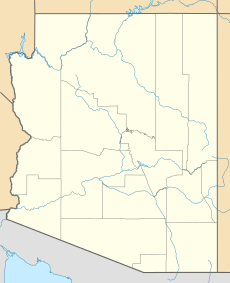Alsap Butte facts for kids
Quick facts for kids Alsap Butte |
|
|---|---|

Alsap Butte centered, south aspect
(Saddle Mountain in background) |
|
| Highest point | |
| Elevation | 7,494 ft (2,284 m) |
| Prominence | 873 ft (266 m) |
| Isolation | 0.92 mi (1.48 km) |
| Parent peak | Brady Peak (8,121 ft) |
| Geography | |
| Location | Grand Canyon National Park Coconino County, Arizona, US |
| Parent range | Kaibab Plateau Colorado Plateau |
| Topo map | USGS Point Imperial |
| Type of rock | sandstone, limestone, shale |
| Climbing | |
| First ascent | 1972 by Donald Davis |
Alsap Butte is a tall, flat-topped mountain in the amazing Grand Canyon in northern Arizona, USA. It stands 7,494 feet (about 2,284 meters) high! This impressive rock formation is located in Coconino County, about two miles north of a spot called Roosevelt Point on the canyon's North Rim. It towers a huge 3,700 feet (about 1,130 meters) above Nankoweap Canyon below.
Contents
About Alsap Butte
Where is it?
Alsap Butte is surrounded by other cool peaks. Its closest taller neighbor is Brady Peak, which is about one mile to the southwest. You can also spot Hancock Butte and Mount Hayden to the northwest, and Colter Butte about two miles to the southeast.
Who was Alsap Butte named after?
Alsap Butte is named after John T. Alsap. He was an important pioneer and politician in the early days of the Arizona Territory. John T. Alsap was the very first mayor of Phoenix. He is also known as the "Father of Maricopa County" because he helped create it. The name "Alsap Butte" was officially recognized in 1932 by the United States Board on Geographic Names.
What is it made of?
Alsap Butte is made up of different layers of rock. The top layers are from the Pennsylvanian and Permian periods and are called the Supai Group. These sit on top of a cliff-forming rock called Redwall Limestone, which is from the Mississippian period. Below that, you'll find the slope-forming Tonto Group from the Cambrian period. These rock types include sandstone, limestone, and shale.
What's the weather like?
Alsap Butte is located in a cold semi-arid climate zone. This means it's generally dry, but it can get quite cold, especially in winter. Any rain or snow that falls on Alsap Butte eventually flows northeast into the Colorado River through a stream called Nankoweap Creek.



